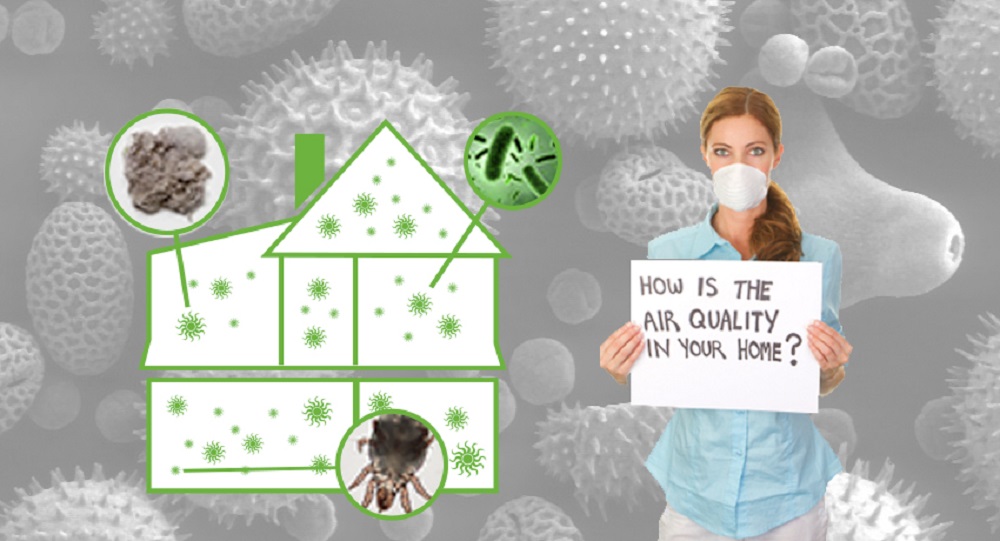How To
Top 10 Ways to Improve Air Quality Indoors

Interstate traffic from bumper to bumper. Industrial smokestacks, soaring and air quality is getting worse. When we think about air pollution, only a few pictures come to mind. However, what about air pollution indoors? Ever consider how secure the air is within your house? Indeed, indoor air pollution frequently exceeds outdoor pollution.
With the average American spending eighty-seven percent of their time indoors, conversations around indoor air quality should happen more often. However, remain calm! You can immediately enhance indoor air quality with Quality Air Brothers.
We’ll look at ten tried-and-true methods in this post to how to improve air quality indoor.
1. Continuous ventilation
Appropriate ventilation is one of the simplest and most efficient strategies to enhance indoor air quality. By opening windows and doors, outside air can enter the house and diffuse inside contaminants. Humidity and smells from within are also eliminated with ventilation. It’s crucial in places where moisture and smells tend to build up, like restrooms and kitchens.
2. Put Air Purifiers to Use
The purpose of air purifiers is to cleanse indoor air of pollutants, allergies, and airborne particles. The smallest particles can be captured by premium air purifiers with HEPA filters, significantly relieving respiratory and allergy symptoms. The space size and the particular pollutants you wish to remove should be considered when selecting an air purifier.
3. Keep your house clean
A hygienic home promotes health. Allergens, dust, and debris frequently gather on surfaces, in upholstery, and carpets. Frequent cleaning can help lower indoor air pollution. This includes dusting, mopping, and vacuuming with a HEPA filter vacuum. Reduce the amount of hazardous chemicals introduced by using non-toxic cleaning supplies and paying extra attention to high-traffic areas.
4. Manage the Humidity
Humidity levels greatly impact indoor air quality. Overwet conditions can encourage the formation of mold and mildew, which disperses toxic spores into the atmosphere. A dehumidifier can assist in preserving ideal humidity levels, often in the range of 30% to 50%. On the other hand, a humidifier helps lessen respiratory discomfort brought on by excessively dry air in dry areas.
5. Do away with tobacco smoke
One of the main indoor air pollutants is tobacco smoke. Thousands of dangerous compounds are present, worsening respiratory conditions and raising cancer risk. Implementing a rigorous no-smoking policy within your home is the greatest strategy to improve indoor air quality. Establish designated spaces for smoking outside and urge visitors to do the same.
6. Select natural cleaning supplies
Harsh chemicals used in many conventional cleaning products can emit toxic vapors into the atmosphere. Choose environmentally friendly, natural cleaning products, or create your cleaning solutions with vinegar, baking soda, and lemon juice. These substitutes improve indoor air quality and are safe and efficient.
7. Cut Down on vocs
Paints, varnishes, cleaning supplies, air fresheners, and other household items might include volatile organic compounds or VOCs. These substances have the potential to off-gas and pollute indoor air. Select low- or no-VOC products whenever you can. Before adding new goods to your living environment, let them off-gas in a well-ventilated area.
8. Maintain houseplants
In addition to being visually pleasant, houseplants naturally purify the air. Some plants, such as peace lilies, spider plants, and snake plants, can aid in the removal of common indoor contaminants like benzene and formaldehyde. Watch out for mold growth in the soil, and don’t water it too much.
9. Manage allergies
Pollen, dust mites, and pet dander are a few allergens that can greatly affect indoor air quality, especially for people with asthma or allergies. Use allergen-proof pillows and mattress coverings, wash bedding frequently, and groom pets outside to reduce shedding to help lessen these irritants. Moreover, allergens can be prevented from spreading throughout your house by using high-efficiency HVAC filters.
10.Examine for Radon
Radon is a natural radioactive gas that can seep into dwellings through the earth. Lung cancer risk can rise with prolonged exposure to high radon levels. A quick and easy method to ensure the indoor air quality is safe is to test for radon. Radon test kits are easy to find and useful for identifying possible problems.
Conclusion on home air quality
Our general health and well-being are significantly impacted by the quality of the air indoors. The good news is that Quality Air Brothers numerous tried-and-true methods for making improvements will make your home safer and cozier. By adopting basic measures like routine ventilation and hygiene, as well as more sophisticated ones like humidity management and air purifiers, indoor air pollution and its health hazards can be considerably decreased.





























